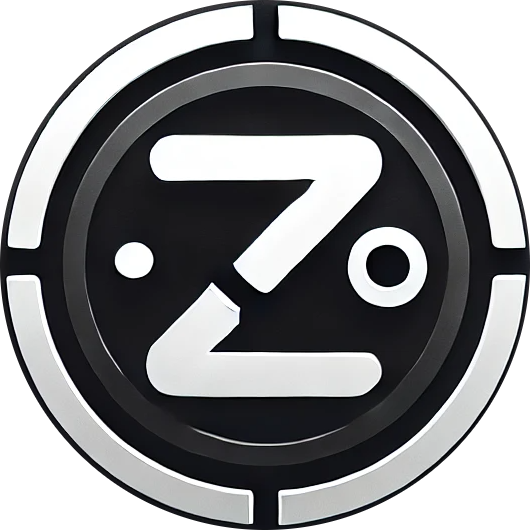
Which Learning Platform Truly Delivers Better Results?
Did you know that while 87% of hiring managers value skills over degrees, only 34% of job seekers feel confident that online learning platforms adequately prepare them for career advancement? As digital education continues to transform our approach to learning, platforms like Khan Academy and Udacity have emerged as popular alternatives to traditional education—but they serve remarkably different purposes and learning journeys.
The confusion isn’t just about which platform offers “better” education—it’s about understanding which one aligns with your specific learning objectives, career goals, and learning style. Making the wrong choice could mean investing hundreds of hours and potentially thousands of dollars into a path that doesn’t lead to your desired outcome.
By the end of this comprehensive comparison, you’ll understand exactly how these two educational giants differ in their approach, audience, content quality, and potential return on investment—allowing you to make an informed decision about which platform deserves your valuable time and resources.
Understanding the Fundamental Differences
What is Khan Academy?
Khan Academy, launched in 2008 by Salman Khan, operates as a non-profit educational organization focused on providing free, world-class education to anyone, anywhere. The platform hosts over 10,000 video lessons across subjects like math, science, computing, history, economics, and test preparation.
Khan Academy’s core characteristics include:
- Completely free educational content with no premium tier
- Strong focus on K-12 education and foundational academic subjects
- Mastery-based learning with adaptive practice exercises
- Simple, straightforward instructional videos
- Mission-driven approach to education accessibility
What is Udacity?
Udacity, founded in 2011 by Sebastian Thrun, David Stavens, and Mike Sokolsky, functions as a for-profit educational technology company focused primarily on workforce development and industry-specific technical skills. The platform specializes in “Nanodegree” programs developed in partnership with major technology companies.
Udacity’s core characteristics include:
- Premium paid educational programs with career-focused outcomes
- Emphasis on cutting-edge technology fields like AI, data science, and programming
- Project-based learning with real-world applications
- Industry partner collaborations (Google, AWS, Microsoft, etc.)
- Focus on employable skills for working professionals
Target Audience and Learning Goals
Khan Academy’s Intended Audience
Khan Academy primarily serves:
- K-12 Students: Supporting core academic subjects aligned with standard curricula
- College Preparation: SAT, ACT, and AP exam preparation
- College Students: Supplementary content for introductory college courses
- Adult Learners: Seeking to fill knowledge gaps or refresh fundamentals
- Teachers and Parents: As a supplementary instructional tool
Independent studies show that approximately 65% of Khan Academy users are under 18, with math content being the most accessed subject area (accounting for approximately 70% of all usage).
Udacity’s Intended Audience
Udacity targets a distinctly different demographic:
- Career Changers: Professionals seeking to pivot into technology fields
- Skill Enhancers: Working professionals adding specialized technical skills
- Recent Graduates: Looking to bridge the gap between academic learning and industry requirements
- Tech Enthusiasts: Seeking cutting-edge knowledge in emerging fields
- Businesses: Companies upskilling their workforce through enterprise programs
According to Udacity’s 2024 learner data, the average user is 31 years old with 6+ years of work experience, and 73% are currently employed while studying.
Course Content and Curriculum Design
Khan Academy’s Content Approach
Khan Academy structures its content around traditional academic subjects with:
- Video Format: Typically 5-15 minute instructional videos with a simple digital blackboard approach
- Curriculum Alignment: Content mapped to common educational standards and requirements
- Subject Breadth: Comprehensive coverage across math, science, humanities, and languages
- Learning Progression: Clear sequencing from basic to advanced concepts
- Practice Integration: Immediate practice opportunities after concept introduction
A distinguishing feature is Khan Academy’s mastery-based approach, where students must demonstrate proficiency at one level before advancing to more complex material. The platform’s strongest offerings remain in mathematics (from basic arithmetic through calculus) and sciences.
Udacity’s Content Approach
Udacity focuses on industry-relevant technical skills with:
- Structured Nanodegrees: Programs requiring 3-6 months of part-time study (approximately 10 hours/week)
- Project-Based Learning: Real-world projects that build a professional portfolio
- Industry Relevance: Curriculum developed with input from hiring companies
- Expert Instruction: Content delivered by industry practitioners rather than traditional educators
- Cutting-Edge Focus: Emphasis on emerging technologies and current industry practices
Udacity’s content development cycle is more responsive to industry trends, with new Nanodegrees frequently launched to address emerging technologies. Their most popular programs focus on data science, artificial intelligence, and full-stack development.
Learning Experience Comparison
Khan Academy Learning Experience
Khan Academy provides a straightforward, self-paced learning environment:
- Interface: Clean, minimal design prioritizing content access
- Learning Path: Clearly defined skill progression with knowledge maps
- Engagement Model: Practice exercises with immediate feedback
- Assessment Approach: Regular quizzes and unit tests to verify understanding
- Support System: Limited community support through forums and comments
The platform emphasizes mastery through repetition and practice, with adaptive algorithms that adjust question difficulty based on performance. A typical 40-minute learning session includes approximately 8-12 minutes of video instruction followed by 25-30 minutes of interactive practice.
Udacity Learning Experience
Udacity offers a more structured, cohort-based approach:
- Interface: Professional dashboard tracking project progress and career resources
- Learning Path: Fixed course sequences with milestone projects
- Engagement Model: Video lessons, interactive quizzes, and coding exercises
- Assessment Approach: Project submissions reviewed by human mentors
- Support System: Mentor support, technical coaching, and peer community
The platform emphasizes practical application through projects that simulate real workplace challenges. A typical learning session includes video instruction, concept reinforcement through coding exercises, and incremental project work. Students spend approximately 60% of their time on projects rather than passive content consumption.
Pricing Models and Value Analysis
Khan Academy’s Pricing Structure
Khan Academy maintains a fully free model:
- Core Content: All videos, exercises, and assessments are completely free
- No Premium Tier: No paid upgrades or premium content
- Funding Model: Non-profit supported by donations, grants, and partnerships
- Supplementary Resources: Optional official SAT prep books available for purchase
- Donations: Voluntary support options for users who wish to contribute
This approach aligns with the platform’s mission of providing universal access to quality education regardless of financial circumstances.
Udacity’s Pricing Structure
Udacity operates with a premium pricing model:
- Nanodegree Programs: $399/month or $1,356+ for access to a full program (typically 3-6 months)
- Enterprise Solutions: Custom pricing for business and government organizations
- Payment Options: Monthly subscription or upfront payment with discount
- Money-Back Guarantee: Limited job guarantees for select programs
- Financial Assistance: Scholarship programs and occasional promotions
According to industry analysis, the average total cost of completing a Udacity Nanodegree ranges from $1,200 to $2,400, representing a significant investment compared to free alternatives but substantially less than traditional degree programs.
Credential Value and Career Impact
Khan Academy’s Credential Value
Khan Academy does not issue formal credentials but offers:
- Skill Mastery: Internal progress tracking showing concept mastery
- Badges and Points: Gamification elements recognizing achievement
- Academic Preparation: Improved performance in traditional educational settings
- College Readiness: SAT score improvements (average gain of 115 points according to College Board research)
- Knowledge Foundation: Conceptual understanding applicable across contexts
While lacking formal certification, Khan Academy’s value comes from genuine knowledge acquisition and academic improvement rather than credentials.
Udacity’s Credential Value
Udacity offers more formal recognition through:
- Nanodegree Certificates: Digital credentials verifiable by employers
- Project Portfolio: Showcasing practical skills through completed projects
- Industry Recognition: Programs co-created with companies like Google, IBM, and AWS
- Hiring Partner Network: Some programs include resume sharing with partner companies
- Career Services: Resume review, LinkedIn profile optimization, and interview preparation
Udacity’s 2024 outcomes report indicates that 73% of graduates report positive career outcomes within six months, including job offers, promotions, or salary increases. The median salary increase reported by graduates was approximately 33%.
Teaching Quality and Instructional Design
Khan Academy’s Teaching Approach
Khan Academy’s instruction is characterized by:
- Consistency: Primarily delivered by founder Sal Khan with a uniform teaching style
- Simplicity: Straightforward explanations focusing on fundamental understanding
- Direct Instruction: Traditional teaching approach with clear examples
- Scaffolding: Concepts built systematically upon previous knowledge
- Accessibility: Content designed to be understood by a wide range of learners
External evaluations of Khan Academy’s teaching effectiveness show particularly strong results in mathematics, where students using the platform as a supplement showed 1.6× faster growth in math proficiency compared to peers.
Udacity’s Teaching Approach
Udacity’s instruction features:
- Industry Experts: Content delivered by working professionals in relevant fields
- Applied Learning: Focus on practical implementation over theoretical foundations
- Current Practices: Emphasis on contemporary tools and methodologies
- Project-Centered: Learning organized around completing realistic projects
- Technical Depth: Advanced technical content assuming some prerequisite knowledge
Independent reviews note that Udacity’s instructional quality varies somewhat between Nanodegrees but consistently emphasizes current industry practices rather than academic theory.
Technology and Subject Coverage
Khan Academy’s Tech and Subject Range
Khan Academy offers comprehensive coverage in traditional academic areas:
- Mathematics: From basic arithmetic through differential equations
- Sciences: Biology, chemistry, physics, and computer science fundamentals
- Humanities: Art history, US history, world history, and economics
- Test Preparation: SAT, LSAT, MCAT, and AP exam preparation
- Early Learning: Basic literacy and numeracy for young learners
The platform’s technical capabilities focus on interactive exercises, particularly in math and science, with integrated tools for graphing, equation solving, and code execution in programming lessons.
Udacity’s Tech and Subject Range
Udacity specializes in cutting-edge technology fields:
- Data Science: Machine learning, data engineering, and business analytics
- Programming: Full-stack, front-end, and mobile development
- Artificial Intelligence: Deep learning, computer vision, and natural language processing
- Cloud Computing: AWS, Google Cloud, and Microsoft Azure certifications
- Autonomous Systems: Self-driving cars, robotics, and flying car engineering
The platform integrates sophisticated technical environments including cloud-based IDEs, GPU-enabled notebooks for machine learning, and specialized tools for fields like autonomous systems.
Which Platform Is Right For You?
Choose Khan Academy If:
- You’re seeking to build or strengthen fundamental academic knowledge
- You’re a K-12 student or supporting one as a parent or teacher
- You need test preparation for standardized exams like the SAT
- You prefer a structured, systematic approach to learning topics from the ground up
- Budget is a primary concern, and you need completely free resources
- You’re looking to fill specific knowledge gaps in traditional academic subjects
- You learn best through clear explanation followed by extensive practice
Choose Udacity If:
- You’re focused on career advancement in technology fields
- You’re seeking to develop industry-relevant, cutting-edge skills
- You value project-based learning that builds a professional portfolio
- You’re willing to invest financially in your professional development
- You benefit from mentorship and human feedback on your work
- You’re interested in emerging technologies not typically covered in traditional education
- You learn best by applying concepts to realistic scenarios and problems
Conclusion
The choice between Khan Academy and Udacity ultimately depends on your educational goals, career aspirations, and personal circumstances. Khan Academy excels as a free, accessible resource for building strong academic foundations, particularly for students in traditional educational pathways or adults looking to fill knowledge gaps in fundamental subjects.
Udacity serves a different purpose as a premium career development platform, offering industry-aligned technical training with tangible projects and credentials valued in the technology job market. Its higher cost represents an investment in specialized skills with potential for significant career returns.
For many learners, these platforms can actually complement each other at different stages of the educational journey—Khan Academy providing the foundational knowledge upon which Udacity’s specialized technical training can build. The ideal approach might involve using Khan Academy to strengthen mathematical and computer science fundamentals before progressing to Udacity’s advanced technical Nanodegrees.
Whichever platform you choose, the most important factor will be your own commitment to consistent learning and practical application of the knowledge gained. Even the best educational platform can only provide opportunities—turning those opportunities into genuine skills requires dedicated effort and practice.
FAQ Section
Can Khan Academy content help me prepare for Udacity Nanodegrees?
Yes, especially in mathematics and programming fundamentals. Khan Academy’s computer science and calculus sections are particularly helpful preparation for technical Nanodegrees that require these foundations.
Does either platform offer accredited degrees?
Neither platform offers regionally accredited degrees. Khan Academy provides no formal credentials, while Udacity offers Nanodegree certificates recognized by some employers but not equivalent to traditional academic degrees.
Which platform is better for complete beginners in programming?
Khan Academy offers more gradual introduction to programming concepts for absolute beginners, while Udacity’s entry-level programming Nanodegrees often assume some basic familiarity with coding concepts.
Can I get a tech job with just Udacity Nanodegrees?
While some graduates report successful career transitions using Udacity alone, most successful job seekers combine Nanodegree credentials with additional learning resources, networking, and independent projects. Employer recognition varies significantly by company and region.
How do these platforms compare in terms of time commitment?
Khan Academy is designed for flexible, self-paced learning in short sessions (15-60 minutes). Udacity Nanodegrees typically require a more substantial commitment of 10-15 hours weekly over 3-6 months to complete.
Are there any hybrid approaches to using both platforms?
Many successful learners use Khan Academy to build foundational knowledge in mathematics and programming basics before investing in Udacity’s more specialized training. This hybrid approach leverages the strengths of both platforms while minimizing costs.














